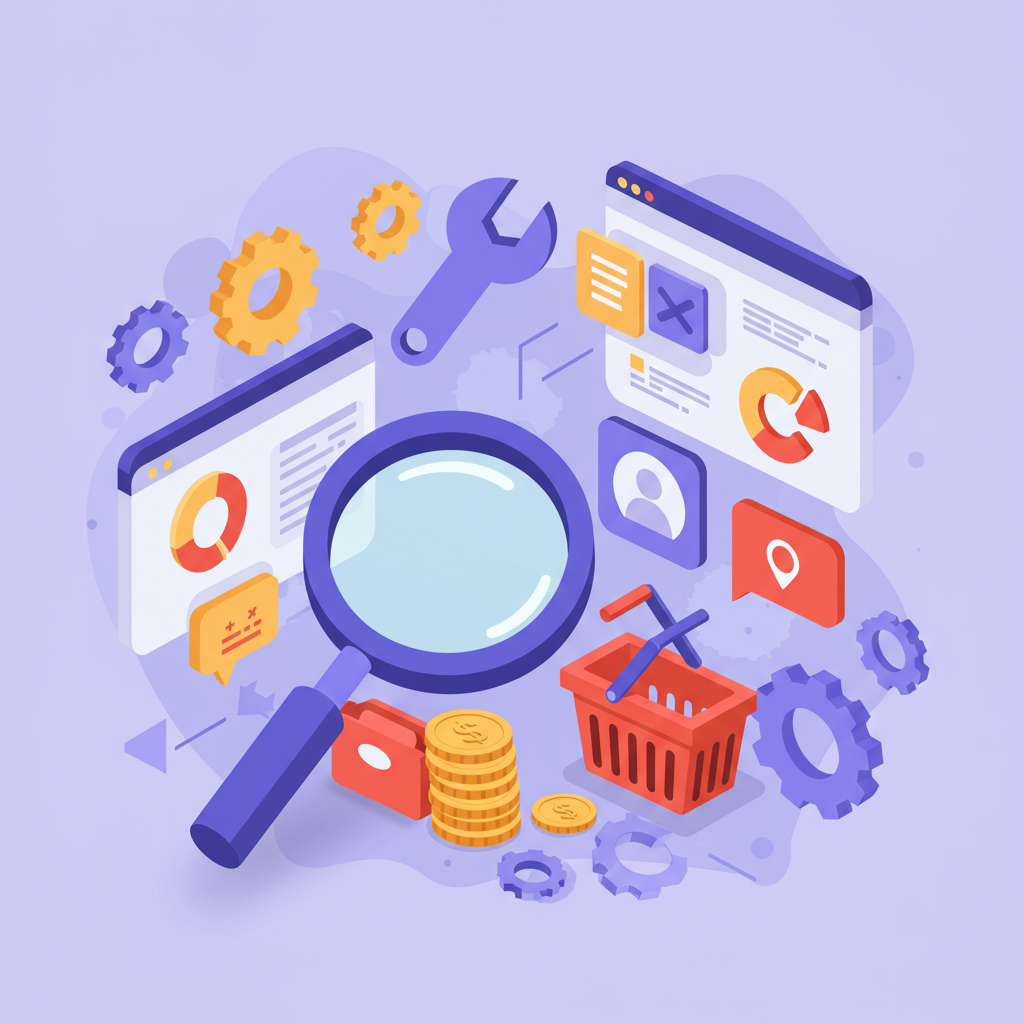Discover the powerful tools I use to drive organic traffic and boost sales on my Shopify store.
As a merchant, I know the thrill of setting up a Shopify store. But the real challenge often begins after launch: getting customers to find you amidst the vast online marketplace.
That’s where Search Engine Optimization (SEO) comes in. It’s not just a buzzword; it’s the lifeblood of organic traffic, ensuring your products appear when potential customers search for them.
Over the years, I’ve experimented with countless strategies and tools to boost my own Shopify store’s visibility. I’ve learned that while Shopify is fantastic, it’s the strategic use of SEO tools that truly makes a difference.
In this article, I want to share my insights on the essential Shopify SEO tools that have helped me, and can help you, climb the search engine rankings.
Let’s start with the basics: On-Page SEO. Shopify itself offers some excellent built-in features. I always make sure to optimize my product titles, descriptions, and meta descriptions directly within the Shopify admin.
These fields are crucial for telling search engines what your page is about. I focus on including relevant keywords naturally, ensuring they read well for customers too.
Beyond the built-in features, I highly recommend apps like “SEO Manager” by venntov. This app is a powerhouse, offering a comprehensive suite of tools from broken link checking to Google PageSpeed integration.
What I particularly love about SEO Manager is its ability to easily edit meta titles and descriptions in bulk, identify missing alt tags for images, and even provide real-time SEO feedback as I type. It’s like having an SEO expert guiding me.
Another fantastic option I’ve used is “Plug in SEO” by SureSwift Capital. It acts as an SEO auditor, scanning your store for common SEO issues like missing headings, broken links, and slow loading pages.
It provides a clear checklist of fixes, making it incredibly easy to address problems even if you’re not an SEO expert. I find its regular health checks invaluable for maintaining my store’s SEO hygiene.
Moving on to keyword research, which is the foundation of any successful SEO strategy. My go-to free tool is Google Keyword Planner.
It helps me discover new keywords related to my products and see their search volume and competition. I use it to understand what my potential customers are actually searching for.
For more in-depth analysis, I’ve invested in tools like SEMrush and Ahrefs. While they come with a subscription, their capabilities are unmatched for competitive analysis, backlink tracking, and advanced keyword research.
I use them to spy on my competitors’ top-performing keywords, identify content gaps, and find high-quality backlink opportunities. They provide a holistic view of the SEO landscape.
Technical SEO often gets overlooked, but it’s vital for search engine crawlability and indexing. Google Search Console is an absolute must-have, and it’s free.
I use it to monitor my site’s performance in Google search results, identify crawl errors, submit sitemaps, and see which queries are bringing traffic to my store. It’s my direct line to Google.
Thankfully, Shopify automatically generates a sitemap for your store, which I then submit to Google Search Console. This helps Google understand the structure of my site and index all my pages efficiently.
Site speed is a ranking factor, and I constantly monitor mine using Google PageSpeed Insights. It gives me actionable recommendations to improve my store’s loading times, which is crucial for both SEO and user experience.
High-quality content is king, and for my blog posts and product descriptions, I rely on Grammarly. It helps me ensure my writing is clear, concise, and free of grammatical errors.
While not a direct SEO tool, good writing indirectly boosts SEO by improving user engagement and reducing bounce rates. I also use tools like AnswerThePublic for content ideas, seeing what questions people are asking around my niche.
Images are critical for e-commerce, but large image files can slow down your site. I use tools like TinyPNG or Shopify apps specifically designed for image compression.
Optimizing images means reducing their file size without sacrificing quality, and ensuring they have descriptive alt text. This not only speeds up my site but also helps my images rank in Google Images.
Finally, tracking your progress is paramount. Google Analytics is indispensable for understanding my website traffic, user behavior, and conversion rates.
I set up goals to track purchases and monitor my organic traffic sources to see if my SEO efforts are paying off. It provides the data I need to refine my strategy.
Shopify’s built-in analytics also offer a quick overview of sales and traffic, which I check regularly. Together, these analytics tools give me a complete picture of my store’s performance.
What do you think about this article? Have you used any of these tools, or do you have others you swear by? I’d love to hear your thoughts.
In conclusion, while Shopify provides a solid foundation, leveraging the right SEO tools is what truly propels your store to the top of search results.
From optimizing on-page elements to diving deep into keyword research and technical fixes, each tool plays a vital role in building a robust online presence.
Remember, SEO is an ongoing process, not a one-time task. By consistently using these tools, I’m confident you can significantly improve your Shopify store’s visibility and drive more organic sales.






